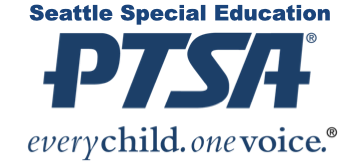Dear School Board Directors, Superintendent Jones and Senior Staff,
Over the last few days, the Board of the Seattle Special Education PTSA has heard from families, teachers and staff about unfilled positions in schools due to COVID absences and substitute shortages resulting in potentially unsafe situations for students, especially students with disabilities. We appreciate that these situations are both unprecedented and extremely challenging for everyone. We write to offer support and partnership in raising the following questions from the disability community in SPS to help inform your decision making. Please let us know if there are additional ways our organization can assist.
- What metrics is the District using to decide whether to close a school building and for how long? Do the special education services in a building factor into that decision? For example, if the special education department is under-staffed due to COVID absences, and there are not qualified staff available to provide the instruction and services required by IEPs, does that factor into the District’s decision making?
- If the District has to close school buildings due to the COVID Omicron surge, are you planning to continue to offer in person special education services to students in those buildings who are not able to learn remotely?
- Will guidance be provided to schools that may have to pivot to remote learning, based on lessons learned in 2020-21 here and around the country, about best practices to provide inclusive education to students with disabilities during remote learning?
- Are IEP teams prepared to continue fulfilling IEP requirements if a school building is closed due to the COVID Omicron surge?
- Given the number of students who are having to quarantine and miss two weeks or more of instruction, what guidance are you giving schools around providing those students remote access to classes and/or helping students make up the instructional time and work they missed?
- If a significant number of school buildings have to be closed for a period of time, will in-person instruction be prioritized for those students who have struggled with remote learning or whose families are unable to support remote learning?
- Are you preparing more robust recovery service options, including tutoring, social groups, extended school year, summer and vacation break instruction and support options, etc.?
As we all know, students with disabilities are among the students who have been most adversely affected during the pandemic. With these questions we hope to highlight the need for decision making to take into account prioritizing the needs of the students who have already suffered the most. We hope to work together to ensure that students with disabilities are able to continue receiving their education and services during this challenging time.
Respectfully,
Janis White
Seattle Special Education PTSA

